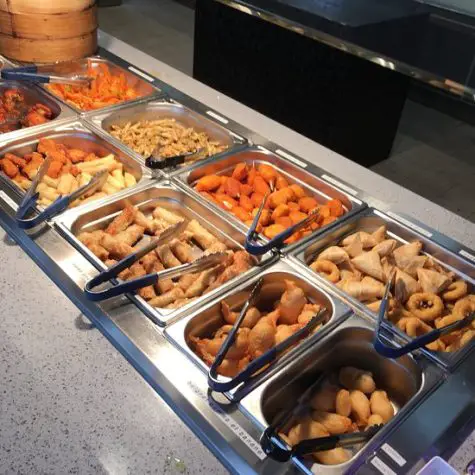Normandy is certainly one of the most gastronomically famous regions in France, but what are the specialties you shouldn’t miss?
We are here to enlighten you on this rich and gourmet cuisine.
Escalope Normande
Voir cette publication sur Instagram
Probably the simplest dish but undeniably the most appreciated.
A veal escalope covered with fresh cream and mushrooms (sometimes a little Calvados for cooking or a little cheese).
Tripes à la mode de Caen
The recipe is simple but (unfortunately) disgusts many people. Few foreigners venture to order a dish of tripe.
However, this dish remains a must in the region. There is also a tripe brotherhood that meets every year to elect the golden tripe.
So here is the recipe (I didn’t try to avoid the question):
- a ruminant stomach
- a foot of beef
- some vegetables
- a cooking time of 12 hours
The hardest part is to start, but you’ll see it’s delicious with French fries.
And if you prefer to try it at home, you can always go and buy your pot of tripe from the winner of the 2021 golden tripière.
The omelet of the Poulard mother (L’omelette de la Mère Poulard)
Mont-Saint-Michel is an architectural masterpiece but it’s also the place-to-be if you want to eat the best omelet in the world.
Thick, airy and slobbery, it’s a treat for the eyes and the taste buds.
This know-how has been kept secret for centuries by the Maison de la Mère Poulard.
If you pass in front of the house, you will be able to admire the chefs dressed in their old-fashioned clothes whisking eggs in their big copper dishes.
The Barfleur mussels (Les moules de Barfleur)
Voir cette publication sur Instagram
Barfleur is the place-to-be if you are addicted to mussels. It is where the biggest deposit of wild mussels is located.
And believe me, their taste is incomparable because of their impeccable growth in pure and nutrient-rich waters.
The Honfleur grey shrimp (Crevettes grises d’Honfleur)
Voir cette publication sur Instagram
One of the specialties of the Bay of the Seine. “Queen of the estuary” or “the little grey one”, this is what the Honfleur shrimp is called.
3x smaller than its pink cousin, the grey shrimp is most often eaten as an aperitif like of tapas. They are peeled and served with buttered bread. A real treat.
Lapin à la Havraise
It looks like a dish straight out of the 19th century, but in reality, it is a dish of French gastronomy.
In Normandy, they have a taste for traditions and they like to perpetuate them. So here, it is not rare to see, still nowadays, rabbit meat on the menu of some restaurants.
This dish is generally eaten from March to June and from September to December. The rabbit is stuffed with a boneless pig’s trotter which has been pre-cooked and various herbs including thyme.
Caramel of Isigny (Caramel d’Isigny)
Voir cette publication sur Instagram
Isigny is where all the best dairy products of the region (and of the country if you are chauvinistic) are made.
So if any Breton person sees this article don’t be offended, it is true that both Brittany and Normandy pay special attention to caramel. However, the Caramel d’Isigny has nothing to do with the salted butter caramel.
How to differentiate them?
Caramel d’Isigny: more golden/light and soft in the mouth
Salted butter caramel: darker and stronger in the mouth
You will find them almost everywhere in Normandy, whether in local grocery stores or in the shelves of supermarkets.
Norman Fondue (Fondue Normande)
Voir cette publication sur Instagram
No, fondue is not only a Savoyard tradition.
In Normandy, the land of a thousand cheeses, they also like to warm up our bodies with dripping wetness.
Be careful, it is a bit more substantial than that of the Savoyard:
- 1 Camembert de Normandie
- 1 Pont L’Evêque
- 1 Livarot cheese
- 300 g of bread cut into cubes
- 10 cl of milk
- 50 g of fresh cream (as in all Norman dishes)
- 2 cl of Calvados (no big surprise)
- 1 shallot, salt and pepper
A word of advice: don’t plan to have a dessert after a Norman fondue, your stomach might give out on you.
Fillet of sole à la Normande
Here is a gourmet recipe that highlights the sole (a fish frequently used in Norman restaurants).
The fish is cooked with cider, cream and a little bit of lemon. It is usually accompanied by good potatoes with Norman butter.
Dieppoises Scallops (Coquilles Saint-Jacques Dieppoises)
Voir cette publication sur Instagram
A recipe for scallops between land and sea, in the image of the region.
The scallops are browned in butter, cream and fish stock, then a few mushrooms are added.
The result is soft and melts in your mouth: an ideal dish in autumn.
The black pudding of Mortagne
Voir cette publication sur Instagram
In Normandy, it is said that they like to eat what no one else would think of eating… But look on the bright side, this is an opportunity for you to try out new things.
Originally from the Orne region, blood sausage is mainly made of ruminant blood and guts. A dish rich in iron and proteins that sportsmen appreciate.
In restaurants you will often see it accompanied by cooked apples (a sweet and savory mixture that warms the heart).
L’Andouille de Vire
Voir cette publication sur Instagram
A length of 30cm for a diameter of 6cm. We told you, Norman cuisine is, above all, plentiful…
Inside? A sweet mixture of offal (in bulk) in a pig gut. Obviously, when said that way, it is not the most appetizing thing on earth…
However, I strongly encourage you to taste it because once accompanied by apple and camembert cheese this little sausage reveals all its flavor.
Cheeses
Voir cette publication sur Instagram
When we talk about Normandy, we often refer to its culinary specialties in terms of cheese.
The most famous is certainly the Camembert, but there are also three other cheeses (present on all trays) with a controlled designation of origin.
Livarot, Neufchâtel and Pont-l’Evêque are three kinds of cheese that are also part of the Normandy specialties to be tasted.
These three cheeses are the basis of many Norman recipes and can be eaten with a simple piece of bread or (and this is often the case in Normandy) in a sauce or in a gratin.
To eat the best cheeses we advise you to buy them directly from the factories or from small artisanal cheesemakers in the region.
The shortbread of Asnelles (Les sablés d’Asnelles)
Voir cette publication sur Instagram
An ancient cookie that leaves a taste of Proust’s madeleine in the mouths of tourists who visit Normandy.
It is the baker Charles Bansard who created the famous Asnelles shortbread in 1912, and for 110 years they are still made in the small village of 576 inhabitants.
The teurgoule
Voir cette publication sur Instagram
The dessert which according to the legend “twists the face”.
This dessert is probably the oldest in the region. The recipe is simple once again: milk, rice, cinnamon and a long cooking time of 5 hours.
The taste is sweet and it is a bit like rice pudding. If you are the kind of person who fears culinary novelties, you can try this dessert with your eyes closed.
The milk jam (Confiture de lait)
Voir cette publication sur Instagram
As the name suggests, this is a milk jam. To give you an idea, we could say that it is a spread with the taste of concentrated milk.
A real delight.
With a spoon or accompanied by a buttered brioche, this little marvel will make you crack a smile for sure.
A little story: the milk jam is a Norman must but it is also found in South America where it is very present under the name of “Dulce de leche”.
The tarte tatin
Voir cette publication sur Instagram
Legend has it that the Tatin sisters, owners of a hotel-restaurant in Lamotte-Beuvron, invented it accidentally. One of the sisters inadvertently spilled the apple pie, thus creating the Tarte Tatin.
This dessert is often served with a scoop of apple or vanilla ice cream.
The “Trou Normand”
Here, I’m not talking about the cinematic masterpiece in which Bourvil excels but a real specialty, and, let’s say,, a real Norman tradition.
Whether in restaurants or at the locals, you will not escape the trou normand.
It is put in the dessert section but in reality, it is more of a digestive break.
Often presented in an ice cream bowl, it is composed of apple, ice cream, and (a lot of) Calvados.
The goal? To wash down all that (very rich) food you will have accumulated and make room for a (very rich) dessert.
So, if in the middle of a meal you hear “trou normand” or a more subtle “ça coince”: you’ll know what’s coming.
The Cider
Voir cette publication sur Instagram
The potion of the indomitable Gaul, the drink of the nobles, leaving beer for the poor.
For a long time, cider replaced wine in the North-Western provinces (you will better understand the little Brittany-Normandy war on this subject).
In Norman meals, it is an essential because it puts all the guests in agreement with its sweetness and its sparkle.
Another specialty that you can try without hesitation (if you haven’t already).
The Calvados
The Calvados is, in a way, the fighting son of the Cider.
Much more alcoholic and strong in taste, this digestive is made from distilled cider. It comes out as an apple liqueur without bubbles.
Be careful, this beverage should be drunk like any other spirit: in small quantities.
L’Embuscade
The Embuscade is the drink of the students of Caen: cheap and (very) crazy.
So it is not rare to see whole jugs of ambush by tens on the tables of bars on Thursday evenings.
Its composition:
- Blonde beer
- Calvados
- White wine
- Grenadine
- Lemon
The taste is very soft and sweet, however, it quickly becomes nauseating (that’s why you will only see students drinking Embuscade).
I still recommend you to try this must-try drink.
I aim to share my tips and recommendations for the beautiful country of France. My goal is to help you plan your next adventure, whether it’s a weekend getaway or a once-in-a-lifetime trip. From finding the best hotels and restaurants, to discovering unique activities and sights, I’ve got you covered!




